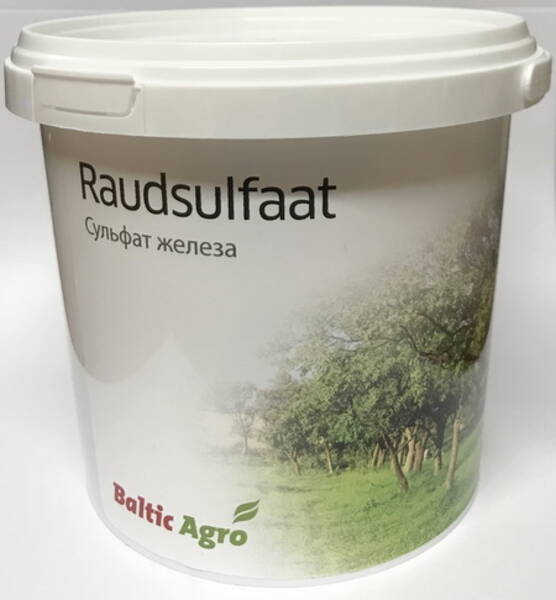3 kg = 300 m2.
Lawn spraying.
Moss appears on the lawn if the soil is too dense and poorly ventilated, poor in nutrients, in the shade, too wet or acidic.
Ferrous sulfate helps to restore the lawn, making it thick and green. The iron content of iron sulphate plays an important role in the biological processes of plants, improving grass growth. Iron vitriol is based on natural minerals and does not harm plants.
To remove moss from a lawn, dissolve 200 g in 10 liters of water and spray on an area of 20 m².
After using ferrous sulfate, the moss turns black due to increased acidity in the topsoil. Blackened moss is removed from the lawn, and soil is poured onto the formed "bald spots" and new seeds are sown. In order to get rid of moss for sure, we recommend regularly aerating the lawn (by piercing) and reducing the acidity of the soil with slaked lime.
Terms of application: from April to October as needed. It is not recommended to use during drought and rainy season.
For the treatment of trees and shrubs against insect pests and diseases.
For spraying fruit trees and berry bushes, a 3-5% solution of ferrous sulfate is prepared (300-500 g in 10 liters of water). Sprayed in early spring (before bud break) or late autumn (after leaves fall), as well as in case of moss appearance on tree trunks and on the lawn.
Almost 200 years ago, it was proved that plants need iron salts for normal growth and fruiting (moreover, the warmer the climate zone, the higher the need for iron in plants). Iron deficiency is manifested in chlorosis - yellowing of the leaves, reduced yields and acute starvation, even the death of trees.
There is only one iron-containing fertilizer - iron sulphate (iron sulphate).
It contains salts in two forms: ferrous sulfate - FeSO4 and ferric sulfate - Fe2(SO4)3.
Any fertilizer containing ferrous sulfate in these forms is not recommended for foliar spraying as it is poorly absorbed by plants in this form and can burn the tops (besides, iron does not transfer well from one part of the plant to another). That is why, with chlorosis, the tops of the shoots with young leaves are the first to suffer. Therefore, iron sulfate is best applied under the root.
There are iron-containing preparations in a chelated state that can be used for foliar spraying, but they are expensive, so it is simply not profitable to apply them under the root (at the same time, chelated fertilizer is better absorbed by plants both when spraying and when watering under the root).
The whole trick is that the iron ion is bound by some active substance, therefore, in this form, iron is more mobile and not so quickly bound by the soil - for example, citric acid.
Gardeners have noticed this phenomenon for a long time and use home-made chelate compositions, increasing the effectiveness of iron sulfate, diluting 1-2 tablespoons of citric acid in a bucket first and only then pouring a tablespoon of iron sulfate (by the way, citric acid neutralizes water hardness, increasing the effectiveness of other fertilizers, even better than nitrophoska).











